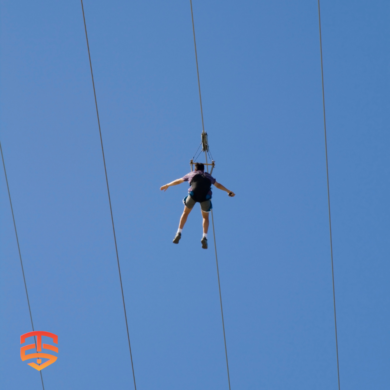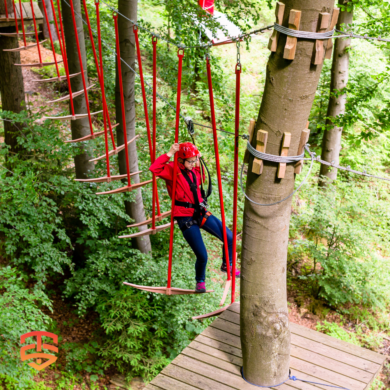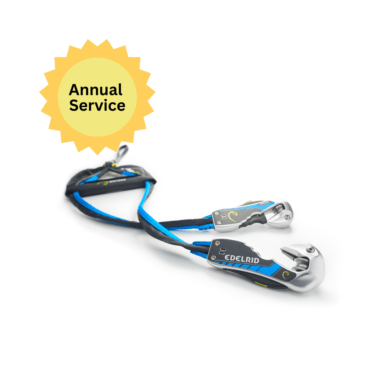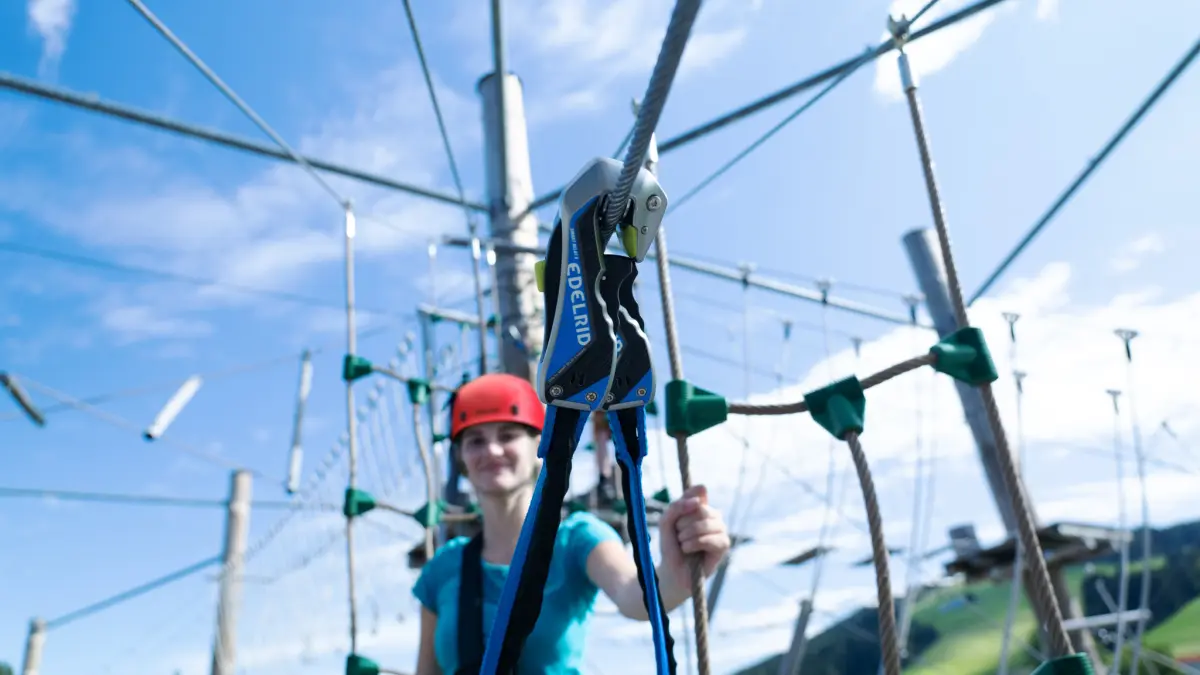
It’s always important to prepare and plan for foreseeable rescue situations. However, the best way to prepare is to aim for no need for rescue at all. Thoughtful planning and managing our facilities, alongside educating our staff, can greatly reduce the need for rescues. This approach can also eliminate the need for complex rescues, which might involve methods and equipment beyond the day-to-day skills and expertise of your employees, thus increasing the potential for errors and failures.
Training and practicing complex procedures exposes trainers and staff to high levels of risk, yet some parks or challenge courses may never need to perform these procedures. This training itself can become a risk. Vertex has trained thousands of people to carry out some form of rescue using a variety of equipment and approaches as technology and ideas have evolved. While we have not had any accidents leading to serious injury, we have had near misses and situations that, if not quickly addressed, could have been very serious.
So, while planning for foreseeable rescues is necessary, we can reduce or remove the potential need through other means. If a rescue is still needed, it can often be managed with the skills, equipment, and methods that your staff use daily. The following solutions contribute to reducing the need for and complexity of rescues.
Innovative PPE and Equipment Solutions for Enhanced Ropes Course Safety
PPE Equipment Solution: The PPE and at-height safety equipment available to ropes course owners for customers and staff is vast and constantly evolving. Consider:
- Can different, better, or simpler PPE or equipment prevent or reduce potential problems?
- Who is advising you, and are they competent?
The options for ropes courses are growing. Initially, PPE and equipment came from mountaineering, but now better, tested, and jurisdiction-conforming options are available. Examples include the migration from ropes and carabiners to ropes-course-specific smart- and continuous-belay products like the Edelrid Smart Belay and LockD Clips. Devices like the Ombilix, an adjustable lanyard for work positioning, allow instructors and inspectors to lower themselves onto a belay line or rescue line if needed.
Your choice of PPE and equipment should reduce, not add to, the complexity of rescues.
-
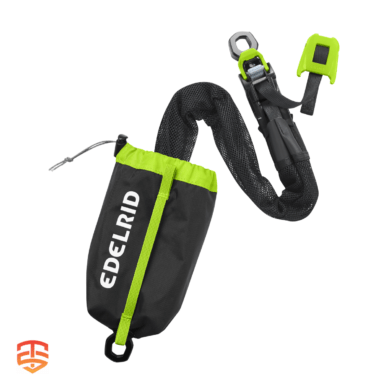 Edelrid KAA Rescue Haul System€ 125,00 – € 146,00 Ex VAT
Edelrid KAA Rescue Haul System€ 125,00 – € 146,00 Ex VAT -
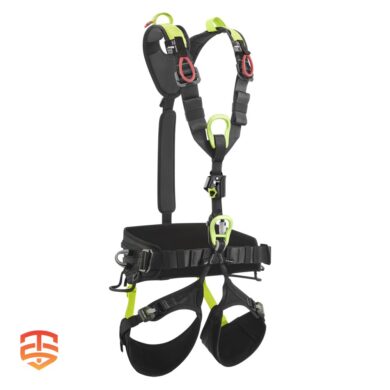 Edelrid VECTOR Y Full Body Harness€ 256,00 Ex VAT
Edelrid VECTOR Y Full Body Harness€ 256,00 Ex VAT -
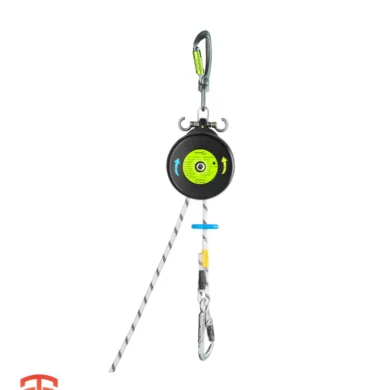 Edelrid Safe Descent Pro | Descent & Rescue device€ 1.131,00 – € 1.798,00 Ex VAT
Edelrid Safe Descent Pro | Descent & Rescue device€ 1.131,00 – € 1.798,00 Ex VAT
Effective Briefing Solutions: Ensuring Safety Through Clear Communication
Briefing Solution: When participants are on the course, we rely on them to follow rules and instructions communicated during pre-climb briefings. If you regularly see unexpected behavior or if participants don’t follow safety rules, consider adjusting the content and delivery of briefings to mitigate these issues.
Effective briefings are critical. Think about:
- What is being said?
- How is it being said?
- Are you providing enough information for customer support?
- Have customers understood the briefing?
Assessing and improving the content and delivery of briefings can solve many issues.
Proactive Supervision: Identifying and Mitigating Potential Rescue Scenarios
Supervision Solution: Watch for indicators that a participant might get into a rescue situation. Look for signs like overconfidence, showing off, lack of confidence, poor balance/spatial awareness, or medical distress. Be aware and listen throughout a session. Know sections of your course that need closer supervision and spots where customers typically need support.
Design a supervision plan based on your knowledge of the course and observations of guests and guides. Remove obstructions from lines of sight and train staff in coaching customers through challenging moments. All this can help prevent the need for a rescue.
In short, staff should know what to look for, who to look out for, where to look, and how to coach customers through stressful moments.
Inspection Solutions: Ensuring Safety Through Rigorous Daily Checks
Inspection Solution: Activities like free falls and products like the Free-Fall and auto-belay devices have critical daily inspection criteria. Correct inspections theoretically eliminate the need for rescue solutions. However, improper inspections can lead to rescue situations.
Understanding your ropes course, activities, components, and inspection criteria is critical. Review:
- When are inspections done?
- Who performs them, and are they competent?
- Can inspectors safely access the parts that need inspecting?
- What are they looking for?
- Do they know the pass/fail criteria and when service is necessary?
- When was the last inspection completed?
Smart Course Design: Reducing Rescue Needs Through Strategic Planning
Design Solution: Smart course design can reduce or remove the need for rescues. Keep records of rescues to identify “hot spots” and alter designs to keep the course flow and reduce rescues.
Consider:
- Making rescue locations easier to use
- Providing alternate activity options to bypass challenging sections
- Designing better access and egress points for staff and customers
- Ensuring staff can access parts of the course for daily inspections
Proper design can reduce or eliminate the need for complex rescues. Retrospective design adjustments can address issues that reveal themselves over time.
Daily Skill-Set Solutions: Leveraging Everyday Equipment for Effective Rescues
Daily Skill-Set Rescue Solution: After considering these solutions, there may still be a foreseeable need to rescue staff or customers. The first option should be a rescue method using the skills and equipment your staff use daily. Ensure this equipment is designed for the intended use and load.
For example, on an assisted belay ropes course, the top-roping system used daily can also assist or rescue a stuck person. A team activity might use another belay system to help. For a staff member stuck on a belay wire during inspection, two other staff members and a belay system can resolve it. One accesses the stuck person while the other prepares to belay and lower them.
Assess your course and identify where existing or temporary belay systems can be used for rescues. This might be the only rescue procedure you need to train, practice, and prepare for.
Despite these measures, some foreseeable situations may still require specialist devices and complex methods. These could include accessing, ascending, lifting, and lowering skills. Carefully consider your choice of equipment and methods to ensure practicality and effectiveness. The easier it is to train for and use, the better your chances of a successful rescue, no matter how rarely needed.
-
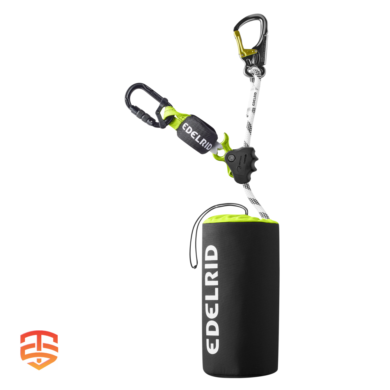 Edelrid OMBILIX 140 | Guided fall arrester€ 112,00 – € 147,00 Ex VAT
Edelrid OMBILIX 140 | Guided fall arrester€ 112,00 – € 147,00 Ex VAT -
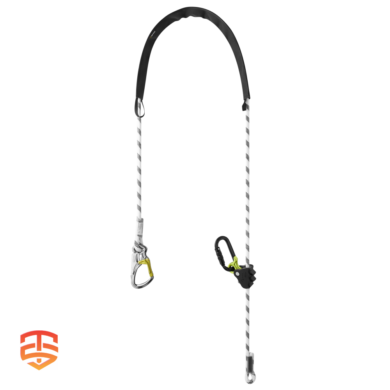 Edelrid OMBILIX ADJUST | Adjustable Lanyard€ 81,00 Ex VAT
Edelrid OMBILIX ADJUST | Adjustable Lanyard€ 81,00 Ex VAT -
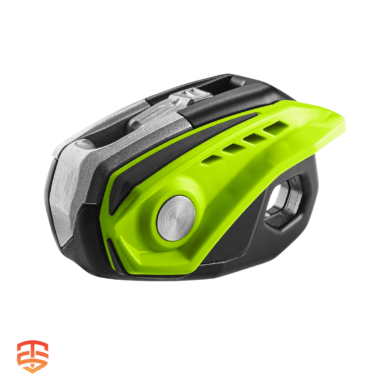 Edelrid MEGAWATT Descender€ 139,00 Ex VAT
Edelrid MEGAWATT Descender€ 139,00 Ex VAT
Achieving Safety Excellence: Elevate Your Ropes Course with Proven Solutions
In conclusion, the safety and success of your ropes course depend on meticulous planning, proper training, and effective management of equipment and procedures. By adopting comprehensive solutions for PPE, briefings, supervision, inspections, course design, and daily rescue skills, you can significantly reduce the need for complex rescues and enhance overall safety. Proactively addressing these areas not only minimizes risks but also ensures a smoother, more enjoyable experience for your participants.
For expert guidance and support in implementing these strategies, contact Thrill Syndicate. Our team is dedicated to helping you achieve the highest standards of safety and efficiency on your ropes course. Reach out to us today to learn how we can assist you in creating a safer and more successful adventure experience.
Contact Thrill Syndicate now to elevate your ropes course safety and efficiency!
Ascend to New Heights: Expert Insights on Ropes Course Technology
Ropes courses offer exhilarating challenges and unforgettable experiences. This article explores the core technology behind them. But to truly scale the heights of knowledge, check out our additional resources featuring expert opinions on the latest advancements and best practices in ropes course design and operation.
- Aerial Safety: Exploring High Ropes Course Belay Systems
- Safe Ropes Course Adventures
- Harnessing Innovation: Next-Generation PPE for Adventure Parks
- Why Keyed Smart Belay Systems Reduce Costs
- Exploring High Ropes Course Belay Systems
- Advanced Rescue Devices in Aerial Adventure Courses
- Top Picks for Best Ropes Course Equipment Season 2023
- Smart Belay for Authentic Climbing Experience
- Edelrid Novelties: Highlights High work and tree care
- Using LockD Clips with Vertical Auto Belays
- Considerations when designing ropes courses and adventure parks?
- Choosing the right Belay System
- Continuous Belay for Ropes Courses
- Ropes Course Rescue Innovations
-
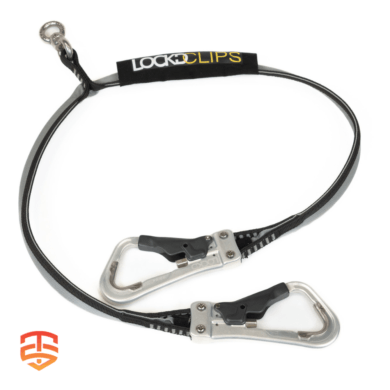 LockD Clips Swivel | Continuous Self-Belay€ 371,00 Ex VAT
LockD Clips Swivel | Continuous Self-Belay€ 371,00 Ex VAT -
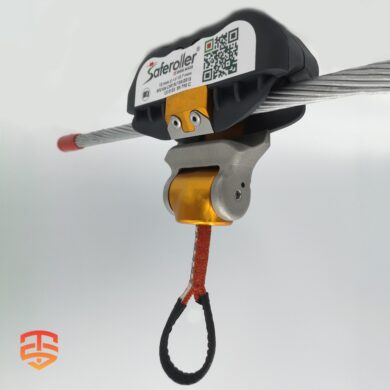 Saferoller Trolley V3 (PPE)€ 245,00 – € 259,00 Ex VAT
Saferoller Trolley V3 (PPE)€ 245,00 – € 259,00 Ex VAT -
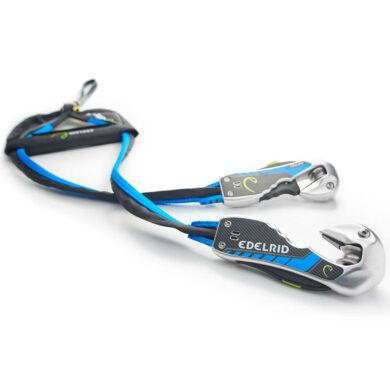 Edelrid Smart Belay X | Magnetic Locking Mechanism€ 420,00 – € 485,00 Ex VAT
Edelrid Smart Belay X | Magnetic Locking Mechanism€ 420,00 – € 485,00 Ex VAT

